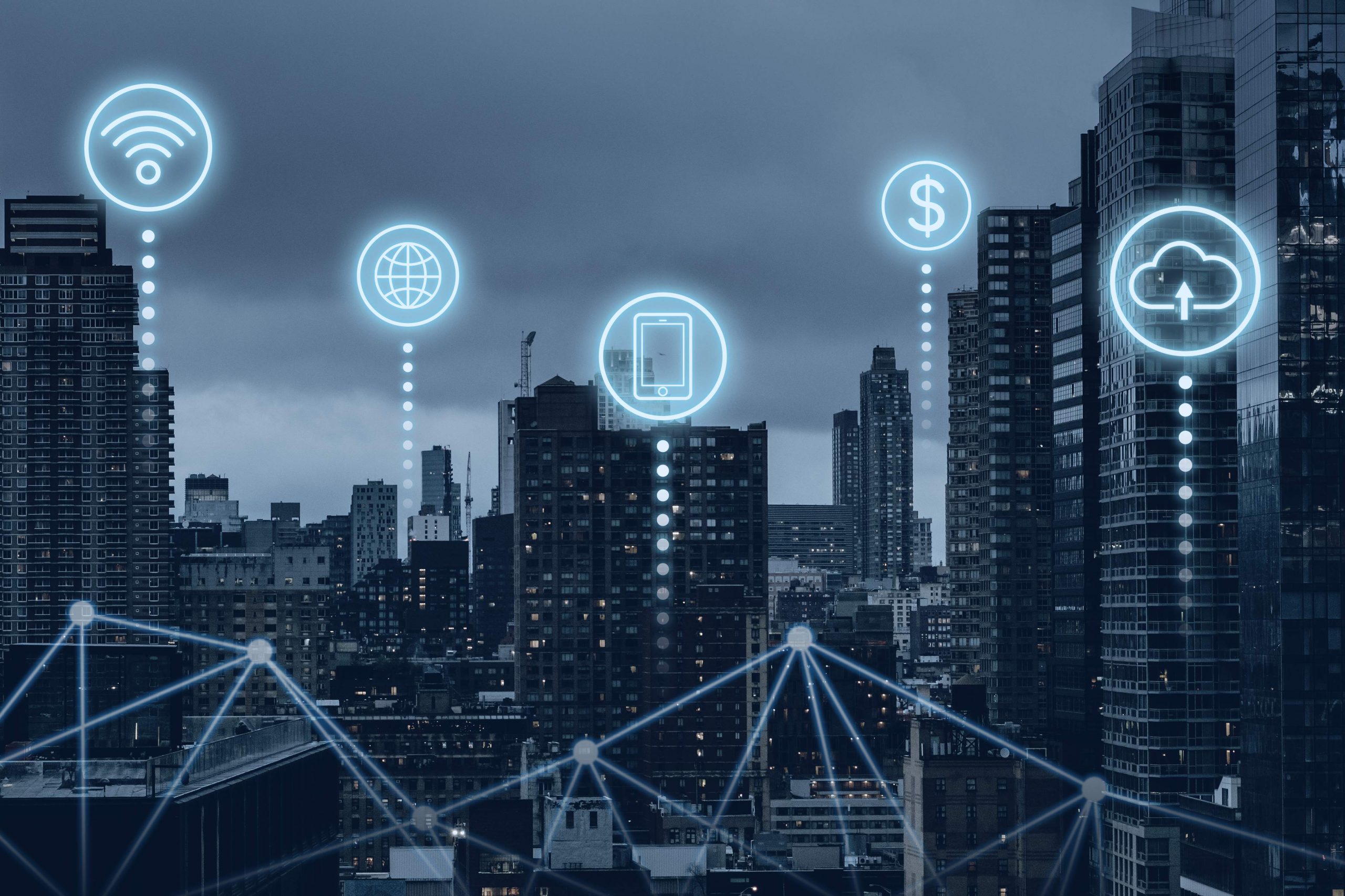IoT Revolutionizing the Face of Smart Cities: Revolutionizing Efficiency, Sustainability, and Security

In recent years, there has been a significant rise in the adoption of Internet of Things (IoT) technologies globally. The rapid advancement of IoT solutions has paved the way for revolutionizing urban planning, infrastructure development, and public services in cities worldwide. Smart cities, also known as "Internet of Things-enabled cities," utilize data-driven infrastructure, network innovations, and IoT technologies to offer various benefits including improved public services, efficient waste management, enhanced public safety, and optimized resource management.
The concept of smart cities is built upon interconnecting different devices on a network, capturing data, and using analytics to improve the quality of life for citizens. Today, a significant number of cities around the world are embracing the potential of smart cities by deploying various IoT solutions to improve traffic management, energy efficiency, waste management, public safety, transportation systems, and water supply systems. Within this article, we will discuss the role of IoT in smart cities, its benefits and challenges, and its impact on urban development.
The Role of IoT in Smart Cities
IoT services and applications are driving the transformation of cities worldwide. The key benefits of this transformation include enhanced public services, increased efficiency, and reduced costs. Smart cities incorporate a range of urban planning initiatives, powered by IoT enabled technologies such as:
- Public Safety: IoT systems enable real-time monitoring of public spaces through sensors and video surveillance, strengthening public safety.
- Traffic Management: Intelligent traffic management systems utilize real-time data from IoT sensors, cameras, and navigational systems, minimizing congestion, and reducing travel times.
- Waste Management: IoT devices track waste collection routes, reduce waste collection cycle time, and optimize waste placement.
- Lighting Management: IoT-enabled smart streetlights can automatically adjust brightness based on time of day, weather conditions, and foot traffic, saving energy.
- Infrastructure Monitoring: The use of IoT systems for infrastructure monitoring enables continuous monitoring of structural integrity, water supply systems, and other utilities.
IoT innovations help urban planners create healthier, safer, and more enjoyable cities.
Challenges and Opportunities
While the adoption of IoT in smart cities has promising benefits, it also poses several challenges and concerns. Some of the key challenges associated with the integration of IoT technologies in smart cities include:
- Security and Vulnerability: IoT devices can expose cities to cyber threats due to a lack of robust security measures, compromising sensitive data.
- Interoperability and Compatibility: Different IoT devices often require distinct technologies and connectivity options, leading to compatibility issues and increased costs.
- Data Management: Collecting and analyzing large amounts of IoT data requires advanced data management systems, which may not always be available.
- Environmental Impact: The deployment of IoT devices contributes to electronic waste, promoting the need for sustainable, energy-efficient designs.
- Scalability and Maintenance: IoT technologies need to be designed for mass use and easy maintenance, considering the vast infrastructure scale of many cities.

Despite these concerns, cities can create optimized, sustainable, and safe living environments for their inhabitants thanks to IoT tools and offerings.
Unlocking Opportunities for Sustainable Urban Development
Cities are using IoT technologies to create sustainability gains, improving citizens’ quality of life. IoT’s role in sustainable urban development involves:
- Renewable Energy Integration: IoT-enabled solar panels and smart grids optimize energy consumption and maximize renewable energy usage.
- Water Conservation: IoT sensors can track water usage patterns, automatically detecting leaks and clogging to minimize water waste and reduce energy consumption.
- Waste-to-Energy: IoT can track waste-to-energy conversion rates, optimize waste collection routes, and suggest improvements in reducing waste generation.
- Green Roofs and Urban Forestry: IoT sensors can track the health of urban green spaces and offer suggestions for increased biodiversity and environmental resilience.
- Transportation Infrastructure: Intelligent traffic management systems optimize traffic flow, reduce congestion, and minimize air pollution.
Smart cities utilize IoT to optimize energy consumption, waste management, transportation systems, and infrastructure development, making them greener and more livable.
Driving Change through Stakeholder Collaboration
IoT is key to the future of urban development. It is necessary for stakeholders to collaborate with cities, exploring collaborative solutions that place citizens at the heart of the smart city revolution.
While collaboration between government agencies, private businesses, and residents remains essential, technology-enabled partnership models like crowdsourcing and consultative platforms provide multiple entry points for cooperation.
As cities consider sustainability, environmental protection, as well as efficient management, IoT remains an essential tool for the successful transformation of urban infrastructure and improvement of public lives.
Unlocking the Potential of IoT in Smart Cities
IoT solutions could enhance the quality of urban life in various ways. Leveraging the power of data analytics and IoT technologies, cities can streamline public services, transportation systems, and waste management systems, decreasing congestion and improving residents’ quality of life.
As we progress on the smart city journey, there is a significant emphasis on collaborative public-private partnerships between cities, private sector businesses, academia, and government organizations in initiating collaborative technologies and solutions.
Through innovative uses of IoT technology, cities can foster environmentally sustainable, economically resilient, and socially just ecosystems and communities to advance human development and create cities that are vibrant, livable, and more efficient.
Share Your Thoughts: How Can Cities and Governments Foster an Inclusive Smart City Vision?
This article presents an overview of the critical role IoT solutions play in promoting sustainable urban development and improving quality of life in cities worldwide. The intersection of IoT, urban planning, public services, and infrastructure transformation offers a new horizon of benefits for urban residents.
Through action-orientated understanding of the key concepts covered in this post, we can mobilize action toward the construction of resilient, inclusive, and sustainable smart cities.
Spread the word among your network about these findings to shape the future of urban infrastructure.

